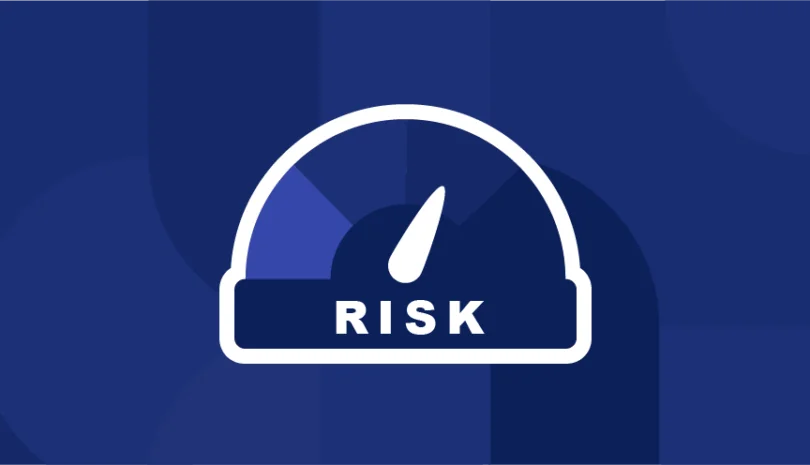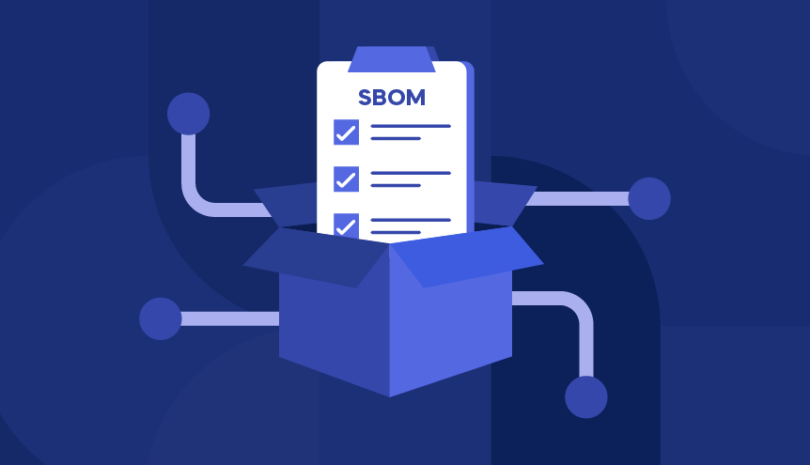If your business works with third-party vendors, you already know how essential they are to your operations. But without a structured vendor communication plan, even the best vendor relationships can turn into a headache. Misalignment, compliance gaps, and security risks can all emerge when communication isn’t clear.
A well-defined vendor communication plan keeps everything running smoothly. It ensures vendors know exactly what’s expected of them, reduces misunderstandings, and keeps your organization compliant with industry regulations. Plus, it strengthens vendor relationships—helping you build trust and reliability in the long run.
When vendor interactions are structured and intentional, businesses can avoid common pitfalls like delayed responses, inconsistent reporting, and compliance failures. A strong communication framework helps set expectations, align vendors with security and risk management strategies, and ensure seamless collaboration.
Beyond day-to-day operations, vendor communication plays a crucial role in third-party risk management. Vendors often have access to critical systems and sensitive data, meaning that poor communication can lead to security vulnerabilities or regulatory non-compliance. A proactive vendor communication plan ensures risks are identified and addressed before they escalate.
This guide will walk you through the essential components of a vendor communication plan and how to create one that helps you stay in control of vendor relationships, reduce risks, and maintain compliance—without the chaos.
What is a Vendor Communication Plan?
A vendor communication plan is a structured approach to managing interactions with third-party vendors. It establishes clear guidelines for expectations, reporting, and compliance, ensuring vendors remain aligned with your organization’s goals.
Without a structured plan, vendor communication can become inconsistent and fragmented. That’s when issues arise—missed deadlines, security vulnerabilities, compliance gaps, and unclear accountability. When communication is reactive instead of proactive, businesses often struggle to manage risks effectively.
A well-defined plan includes protocols for onboarding, performance tracking, incident reporting, and compliance reviews to ensure vendors meet your company’s operational and security requirements. It also establishes a centralized system for vendor interactions, ensuring that updates, performance metrics, and compliance reports are documented and accessible.
For organizations working with multiple vendors across different services—such as cloud providers, IT security firms, and supply chain partners—structured communication is even more critical. A communication plan and vendor risk management framework help standardize processes, ensuring vendors remain accountable and aligned with risk management strategies.
The Importance of a Vendor Communication Plan
A vendor communication plan does more than just keep interactions organized—it protects your business from security, compliance, and operational risks. Clear, structured communication ensures vendors meet expectations, preventing misalignment and minimizing disruptions.
When vendor interactions aren’t properly managed, small miscommunications can snowball into significant risks. Vendors might fail to meet compliance requirements, misinterpret security policies, or fail to report incidents in a timely manner. These issues can expose businesses to regulatory penalties, reputational damage, and operational downtime.
An effective communication plan streamlines vendor oversight, making risk assessment and compliance tracking more efficient. By maintaining structured communication, businesses can:
- Ensure vendors align with internal security and compliance standards.
- Reduce operational disruptions by catching issues before they escalate.
- Improve response times for risk-related incidents and incident management.
- Simplify regulatory audits with well-documented vendor interactions.
Failure to properly manage vendor security can expose businesses to regulatory penalties and operational risks. The FTC Vendor Security Guidance provides insights into securing vendor relationships and ensuring compliance with data protection standards.
Without structured communication, organizations risk losing visibility into vendor security postures and compliance efforts. A well-implemented vendor communication plan enhances vendor accountability and ensures third-party risks are effectively managed.
Key Components of a Successful Vendor Communication Plan
Building a vendor communication plan that works requires more than just outlining expectations—it’s about creating a structured, proactive, and risk-aware framework that keeps vendors accountable and aligned with your organization’s needs.
Clear Objectives and Goals
Every vendor communication plan should start with a clear purpose. Whether it’s improving vendor performance, reducing security risks, or ensuring compliance, defining objectives ensures that vendor interactions align with business priorities. Without clear goals, communication becomes reactive rather than strategic.
Measurable objectives help businesses track progress over time. If compliance is a priority, the plan should outline how vendors report on regulatory adherence and what steps they must take to maintain security best practices. If performance is the focus, the plan should define key deliverables and structured reporting expectations.
Clearly documented goals also help vendors understand their role in third-party risk management. When vendors are given specific compliance expectations, escalation protocols, and response timelines, they are more likely to follow through on security and performance commitments.
Defined Roles and Responsibilities
Vendor communication can break down when it’s unclear who is responsible for what. Defining roles—both internally and on the vendor’s side—ensures accountability and a structured escalation process.
Internally, different teams may handle vendor oversight, compliance tracking, and risk management. Vendors, in turn, must understand who they should report to, how frequently they should provide updates, and what information they must share.
A clear chain of communication prevents delays and ensures that security incidents, compliance violations, and performance concerns are addressed quickly. When vendors know exactly who to contact, when to report, and how to escalate risks, businesses gain better visibility into potential threats.
Consistent Communication Channels
Communication with vendors needs to be structured, not scattered. Businesses should establish dedicated communication channels to ensure that interactions are secure, auditable, and efficient.
These could include vendor management platforms, encrypted email systems, or compliance dashboards that allow businesses to monitor vendor performance in real time. By ensuring vendors always know where to report issues and share updates, businesses can prevent miscommunication and keep workflows streamlined.
Regular Check-Ins and Reviews
Vendor management isn’t just about setting expectations—it’s about ongoing oversight. Regular check-ins, such as scheduled performance reviews, compliance assessments, and security audits, keep vendors accountable and help businesses stay ahead of potential risks.
A structured approach to vendor reviews ensures that organizations can track vendor performance, discuss compliance concerns, and adjust expectations as business needs evolve. Without regular reviews, vendor risks can go unnoticed until they become costly problems.
Incident Reporting and Escalation Protocols
Even with the best vendors, incidents happen. A vendor communication plan should define exactly how vendors report security breaches, compliance violations, or operational disruptions. Without a structured escalation protocol, critical issues can slip through the cracks, leading to serious consequences.
Clear reporting timelines, documentation requirements, and escalation procedures ensure that vendors know how to respond to incidents and who to notify. When issues are handled quickly and efficiently, businesses can minimize disruptions and maintain compliance.
Documentation and Record Keeping
Keeping a detailed record of vendor communications ensures compliance and improves risk management. Businesses should document vendor performance reviews, risk assessments, and compliance updates to create an audit-ready trail of interactions. This not only streamlines reporting but also helps track patterns that could indicate potential risks.
When vendor interactions are documented, businesses gain greater control over their third-party risk landscape. Whether for regulatory compliance or internal risk assessments, having a structured record-keeping process simplifies vendor oversight.
Metrics and KPIs
Measuring vendor performance helps businesses determine whether third-party relationships are delivering value. A vendor communication plan should include key performance indicators (KPIs) that track compliance adherence, service reliability, and incident response times.
By setting measurable benchmarks, businesses can assess vendor effectiveness over time and adjust communication strategies when necessary. If vendors consistently fail to meet compliance requirements or deliver on expectations, organizations can make informed decisions about next steps.
Conflict Resolution Framework
Vendor relationships don’t always go as planned. A structured conflict resolution process ensures that disputes are managed efficiently, preventing minor issues from escalating into bigger problems. A vendor communication plan should define how conflicts are addressed, including when to escalate issues to legal teams or compliance officers.
Having a clear conflict resolution framework helps businesses maintain productive vendor relationships while ensuring accountability. When disputes arise, structured communication allows for swift resolution without unnecessary delays or disruptions.
Integrating Third-Party Risk Management into the Communication Plan
A vendor communication plan should be fully integrated into an organization’s third-party risk management (TPRM) strategy. Vendors should provide regular updates on their security posture, risk mitigation efforts, and compliance status. Businesses, in turn, should proactively assess vendor risks and adjust communication strategies based on potential vulnerabilities.
Aligning vendor communication with risk management ensures businesses stay ahead of security threats and compliance challenges. A proactive approach helps organizations mitigate risks before they become liabilities.
Build a Successful Vendor Communication Plan
A well-structured vendor communication plan is the foundation of strong vendor relationships, effective risk management, and long-term business resilience. When businesses clearly define expectations, establish structured reporting channels, and integrate third-party risk management strategies, vendors remain accountable and aligned with organizational goals.
An effective communication plan goes beyond just keeping records—it actively enhances collaboration, minimizes security risks, and ensures compliance. It includes key elements such as regular check-ins, defined roles and responsibilities, incident escalation procedures, and performance tracking. By implementing these components, businesses can ensure vendors understand security and compliance requirements, reducing the risk of operational disruptions, regulatory violations, and service failures.
However, vendor communication is not a one-time effort. As regulations evolve, business priorities shift, and security threats emerge, organizations must continuously refine their communication strategies. Adapting to these changes ensures businesses remain agile, proactive, and prepared for vendor-related risks.
Whether businesses are developing a new plan or improving an existing one, the focus should always be on clarity, consistency, and accountability. A well-managed vendor communication strategy strengthens oversight, mitigates risks, and ensures seamless operations—ultimately creating a more resilient and secure business environment.
Want to streamline your vendor communication and strengthen third-party risk management? Panorays helps businesses automate vendor assessments, improve compliance tracking, and enhance security oversight—all in one platform. Start optimizing your vendor communication plan today. Get a Demo today.
Vendor Communication Plan FAQs
-
A vendor communication plan is designed to streamline interactions, enhance vendor oversight, and mitigate third-party risks. It ensures vendors align with business objectives, follow security and compliance requirements, and deliver on contractual obligations. A well-structured plan establishes clear expectations, standardized reporting protocols, and defined escalation procedures, enabling businesses to proactively manage vendor-related risks.
Beyond improving operational efficiency, a communication plan helps reduce regulatory violations, prevent security incidents, and strengthen third-party risk management. Structured communication promotes transparency and accountability, ensuring vendors meet service expectations and comply with security best practices, minimizing disruptions and regulatory penalties.
-
Developing a vendor communication plan requires input from multiple teams, including vendor management, compliance, legal, IT security, procurement, and risk management. Each team plays a role in establishing protocols that ensure vendors meet performance, security, and regulatory requirements.
Cross-functional collaboration ensures a comprehensive communication strategy that aligns vendor oversight with the organization’s broader risk management framework. By defining responsibilities across teams, businesses can effectively monitor vendor performance, enforce compliance, and address risks proactively.
-
Technology centralizes vendor communication, tracks compliance, and automates risk assessments. Vendor management platforms provide real-time monitoring, ensuring businesses can efficiently document interactions and track vendor performance.
Secure communication tools, such as encrypted email and compliance portals, safeguard sensitive information, while compliance tracking systems help manage regulatory requirements and streamline audits. By integrating technology, businesses improve efficiency, reduce manual effort, and enhance vendor risk visibility.



